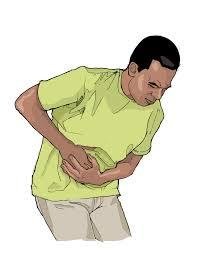Consider the following Case scenarios
| Case scenario 1 |
|---|
| Patient #1 is admitted with pulmonary tuberculosis and dies in the ward. What is the cause of death? |
| Patient #2 is admitted with pulmonary tuberculosis and then has a massive haemoptysis and dies in the ward. What is the cause of death? |
|
|
| Case scenario 2 |
|---|
|
Patient #3 is admitted with acute gastoenteritis and dies in the ward. What is the cause of death? |
|
Patient #4 is admitted with acute gastoenteritis and dehydration and dies in the ward. What is the cause of death? |
| Patient #5 is admitted with acute gastoenteritis and dehydration and then develops acute renal failure and dies in the ward. What is the cause of death? |
| Case scenario 3 |
|---|
| Patient #6 is brought with myocardial infarction and dies in the emergency dept. What is the cause of death? |
|
Patient #7 is brought with myocardial infarction and then develops arrhythmia and then dies in the Coronary Care Unit (CCU). What is the cause of death? |
| Patient #8 is brought with myocardial infarction and then develops arrhythmia and heart failure and then dies in the CCU. What is the cause of death? |
What is the cause of death in the given 3 case scenarios ?
In a given case scenario, identifying the correct cause-of-death can be done by constructing a chronological sequence of events (biologically-plausible sequence of events).
This is explained in the next set of slides.
Scenario 1
1. Patient #1 is admitted with pulmonary tuberculosis and dies in the ward.
What is the cause of death?


2. Patient #2 is admitted with pulmonary tuberculosis and then has a massive haemoptysis and dies in the ward.
What is the cause of death?
The chronological sequence of events (starting with the first event at the bottom and leading to the terminal event at the top) for
Patient #1 and Patient #2 are:
Patient #1
Patient #2
-
Pulmonary tuberculosis is the underlying cause of death in both the patients
-
Massive haemoptysis is the immediate cause of death in Patient #2
| Death |
|---|
| massive haemoptysis |
|---|
| pulmonary TB |
|---|
| pulmonary TB |
|---|
| Death |
|---|



Scenario 2
1. Patient #3 is admitted with acute gastroenteritis and dies in the ward.
What is the cause of death?

2. Patient #4 is admitted acute gastroenteritis and dehydration and dies in the ward.
What is the cause of death?

3. Patient #5 is admitted acute gastroenteritis and dehydration and then develops acute renal failure and dies in the ward.
What is the cause of death?
The chronological sequence of events (starting with the first event at the bottom and leading to the terminal event at the top) for
Patient #3, Patient #4 and Patient #5 are:
Patient #3
Patient #4
| Death |
|---|
| dehydration |
|---|
Patient #5
| acute renal failure |
|---|
| dehydration |
|---|
| Death |
|---|
| Death |
|---|
-
Acute gastroenteritis is the underlying cause of death in all the 3 patients
-
Dehydration is the immediate cause of death in Patient #4
-
Acute renal failure is the immediate cause of death and dehydration is the intermediate or antecedent cause of death in Patient #5
| acute gastroenterits |
|---|






| acute gastroenterits |
|---|
| acute gastroenterits |
|---|
1. Patient #6 is brought with myocardial infarction and dies in the emergency dept.
What is the cause of death?

2. Patient #7 is brought with myocardial infarction and then develops arrhythmia and then dies in the Coronary Care Unit (CCU).
What is the cause of death?
3. Patient #8 is brought with myocardial infarction and then develops arrhythmia and heart failure and then dies in the Coronary Care Unit(CCU).
What is the cause of death?

Scenario 3
The chronological sequence of events (starting with the first event at the bottom and leading to the terminal event at the top) for
Patient #6, Patient #7 and Patient #8 are:
Patient # 6
Patient # 7
| Death |
|---|
| arrhythmia |
|---|
Patient # 8
| heart failure |
|---|
| myocardial infarction |
|---|
| arrhythmia |
|---|
-
Myocardial infarction is the underlying cause of death in all the 3 patients
-
Arrhythmia is the immediate cause of death in Patient #7
-
Heart failure is the immediate cause of death and arrhythmia is the intermediate or antecedent cause of death in Patient #8
| myocardial infarction |
|---|
| myocardial infarction |
|---|
| Death |
|---|
| Death |
|---|






Patient #1
Summary slide - Scenario 1
Patient #2
| Immediate CoD |
|---|
| Underlying CoD |
|---|
| Intermediate CoD |
|---|
| XXXXXXXXX XXXXXX |
|---|
| pulmonary TB |
|---|
| XXXXXXXXX XXXXXX |
|---|
| Immediate CoD |
|---|
| Underlying CoD |
|---|
| Intermediate CoD |
|---|
| massive haemoptysis |
|---|
| pulmonary TB |
|---|
| XXXXXXXXX XXXXXX |
|---|








Patient #3
Patient #4
Patient #5
Summary slide - Scenario 2
| Immediate CoD |
|---|
| Intermediate CoD |
|---|
| Underlying CoD |
|---|


| XXXXX XXXXX |
|---|
| XXXXXX XXXXX |
|---|
| acute gastroenteritis |
|---|


| Immediate CoD |
|---|
| Intermediate CoD |
|---|
| Underlying CoD |
|---|


| dehydration |
|---|
| XXXXXX XXXXX |
|---|
| acute gastroenteritis |
|---|


| Immediate CoD |
|---|
| Intermediate CoD |
|---|
| Underlying CoD |
|---|


| acute renal failure |
|---|
| dehydration |
|---|
| acute gastroenteritis |
|---|


Patient #6
Patient #7
Patient #8
Summary slide - Scenario 3
| Immediate CoD |
|---|
| Intermediate CoD |
|---|
| Underlying CoD |
|---|


| XXXXX XXXXX |
|---|
| XXXXXX XXXXX |
|---|
| myocardial infarction |
|---|


| Immediate CoD |
|---|
| Intermediate CoD |
|---|
| Underlying CoD |
|---|


| arrhythmia |
|---|
| XXXXXX XXXXX |
|---|
| myocardial infarction |
|---|


| Immediate CoD |
|---|
| Intermediate CoD |
|---|
| Underlying CoD |
|---|


| heart failure |
|---|
| arrhythmia |
|---|
| myocardial infarction |
|---|


In actual practice, death certification may be relatively straightforward in certain cases and complicated in others. If a person has died because of a single condition such as malaria or tuberculosis or stroke, then the underlying cause of death is pretty straightforward -- it is malaria or tuberculosis or stroke respectively. Very often, individuals will have multiple disease conditions. This is shown in next set of examples.
Ascertaining Cause of Death in Complicated Cases
The cause of death depends on the biologically plausible sequence of events.
Three case scenarios differing in the terminal sequence of events are as follows:
Example 1: Case scenario
An adult who is a smoker has ischemic heart disease, myocardial infarction, diabetes, hypertension, stroke, COPD and pneumonia.
When this person dies, what is the single underlying cause that his death will be attributed to ?
Multiple terminal sequence of events leading to death
| If he deteriorated because of the stroke and subsequently developed pneumonia and then died, then the terminal sequence of events would appear as in Case 1 | If on the other hand, it was COPD which worsened his terminal condition following which he developed pneumonia (which triggered an acute exacerbation of COPD) and then he died, it would appear as in Case 2 | If it was Myocardial infarction which caused his death, then the terminal sequence of events would appear as in Case 3 |
|---|---|---|
| Case 1 | Case 2 | Case 3 |
| Death Pneumonia Stroke |
Death Acute exacerbation Pneumonia COPD |
Death Myocardial Infarction |






If the terminal sequence of events leading to death was :
| Case 1 | Case 2 | Case 3 |
|---|---|---|
| Death Pneumonia Stroke |
Death Acute exacerbation Pneumonia COPD |
Death Myocardial infarction |
| Here, Stroke is the Underlying Cause of Death |
Here, COPD is the Underlying Cause of Death |
Here, MI is the Underlying Cause of Death |






If the terminal sequence of events leading to death was:
| Case 1 | Case 2 | Case 3 |
|---|---|---|
| Death Pneumonia Stroke |
Death Acute exacerbation Pneumonia COPD |
Death Myocardial infarction |
| Here in Case 1, all other conditions not in the disease pathway (such as hypertension, diabetes, IHD, MI, and COPD) should be listed as Contributory Causes |
Here in Case 2, all other conditions not in the disease pathway (such as hypertension, diabetes, IHD, MI, and Stroke) should be listed as Contributory Causes |
Here in Case 3, all other conditions not in the disease pathway (such as hypertension, diabetes, Stroke and COPD) should be listed as Contributory Causes |






Example 2: Case scenario
An adult with long-standing diabetes is diagnosed with carcinoma lung. He dies due to massive haemoptysis.
What is the single underlying cause that his death will be attributed to ?
Terminal sequence of events leading to death
| In this case he deteriorated due to massive haemoptysis, so the terminal sequence of events would be as below |
|---|
| Death Massive haemoptysis Carcinoma lung |
| In this case, diabetes mellitus is not in the disease pathway and hence will be listed as a Contributory Cause |


Example 3: Case scenario
An adult with long-standing hypertension is diagnosed with poorly differentiated metastases in abdominal cavity. The primary site of carcinoma is unknown. He dies due to multiple organ failure.
What is the single underlying cause that his death will be attributed to ?
Terminal sequence of events leading to death would be as below
| Death Multiple organ failure Poorly differentiated metastases – abdominal cavity Unknown primary site |
|---|
| In this case, hypertension is not in the disease pathway and hence will be listed as a Contributory Cause |



Example 4: Case scenario
An adult suffering from colon cancer is brought to hospital with myocardial infarction. He dies due to congestive heart failure.
What is the single underlying cause that his death will be attributed to ?
Terminal sequence of events leading to death would be as below
| Death Congestive heart failure Myocardial Infarction |
|---|
| In this case, colon cancer is not in the disease pathway and hence will be listed as a Contributory Cause. This is an example of non-cancer (underlying) cause of death in a patient with cancer. |


Competing Cause-of-Death
The term competing cause of death can be explained as two or more causally unrelated, etiologically specific diseases listed in part I of the death certificate.
This is explained in the next example.
Competing Cause-of-Death
Example 5: Case scenario
Consider the case of this elderly man who was admitted with emphysema, influenza and pneumonia and then died subsequently in the hospital.
How does one construct a sequence of events in this case?
Terminal sequence of events leading to death would be as below
| Death Pneumonia Emphysema, Influenza |
|---|


There are 2 competing causes of death here - Emphysema and Influenza. Both CANNOT be written together, next to each other.
There can be 2 scenarios -
Scenario 1 -
The treating physician needs to determine whether the man had very mild influenza; in which case influenza would only be contributory to events leading death. In this case then severe emphysema that caused pneumonia leading to death will be primary cause, and therefore the terminal events would be :
Terminal sequence of events leading to death would be
| Death Pneumonia Emphysema |
|---|
| In this case, Influenza is not in the disease pathway and hence will be listed as a Contributory Cause |
Terminal sequence of events leading to death would be as below


Scenario 2 -
Or on the other hand, the man might have had long-standing mild emphysema; (that was likely to have been only contributory)but it was the recent acute influenza infection that caused the pneumonia that led to death, and therefore the death certificate should be filled as :
Terminal sequence of events leading to death would be
| Death Pneumonia Influenza |
|---|
| In this case, Emphysema is not in the disease pathway and hence will be listed as a Contributory Cause |
Terminal sequence of events leading to death would be as below


Constructing a sequence of events and differentiating between the
different causes of death is helpful for:
2. Doctor/hospital
1. Government/health authority
How does construction of sequence of events help?
1. The government/health authority is mainly interested in the
underlying cause of death.
This helps in planning for allocation of resources in terms of staffing, infrastructure (drugs/equipment/supplies) and healthcare organization at the overall level.
That is, that there are:
#3 cases of acute gastroenteritis,
#2 cases of pulmonary TB and
#3 cases of myocardial Infarction
2. The doctor/hospital is interested not only in the underlying cause of death but also in identifying the subsequent complications so that the appropriate treatment can be made at several points along the pathway to ameliorate symptoms and/or prevent death.
Construction of a chronological sequence of events is important for:
-
identifying the underlying cause of death thereby helping government/health authority in health planning
-
accurate filling up of a death certificate
-
supporting doctors/ hospital in identifying complications and planning appropriate treatment for the particular condition